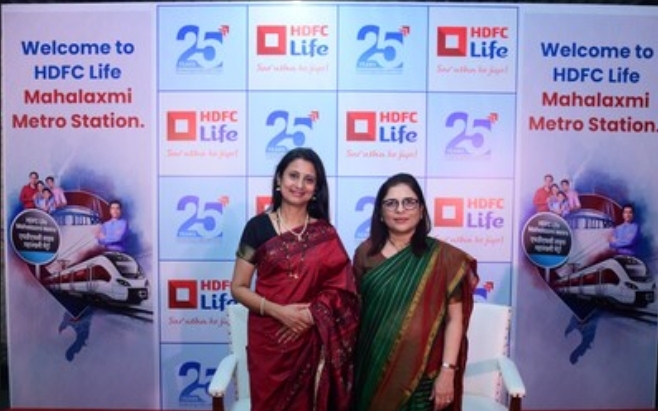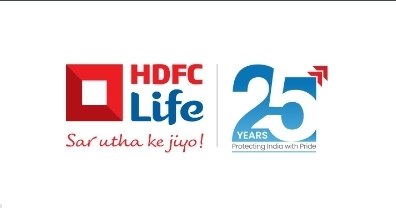When Transit Meets Trust: How HDFC Life’s Metro Station Branding Redefines Customer Experience Strategy
Picture this: every morning, thousands of Mumbai commuters descend into the gleaming corridors of Mahalaxmi Metro Station. They’re not just traveling to work—they’re entering a space where HDFC Life has transformed a transit hub into a living embodiment of trust and financial security. This isn’t traditional advertising; it’s experiential branding that meets customers exactly where they are, both physically and emotionally.
HDFC Life’s decision to brand the Mahalaxmi Metro Station represents a fascinating evolution in customer experience strategy. Rather than shouting from billboards or interrupting digital feeds, the company has chosen to become part of Mumbai’s daily rhythm, creating what might be the most sophisticated example of contextual brand presence in India’s financial services sector.
The Psychology Behind Transit Brand Integration
Transit advertising operates on principles that traditional marketing often overlooks. Research indicates that metro advertising can boost brand recall by 20 to 40 percent, but HDFC Life’s approach goes far deeper than mere visibility. The psychological principle at work here is environmental branding—where the brand becomes inseparable from the commuter’s daily journey.
According to customer experience experts, successful brands in the financial services sector are shifting from product-centric to customer-journey-centric approaches. HDFC Life’s Mahalakshmi metro station branding exemplifies this transformation. Instead of simply promoting insurance products, the company has positioned itself as a companion in life’s journey—a metaphor that resonates powerfully with commuters who use the metro daily to pursue their aspirations.
The emotional connection runs deeper when we consider the demographics. Mumbai Metro Line 3 serves primarily SEC A and B audiences, recording an impressive 156,456 passengers on the first day of full operations, with numbers consistently growing. So is with the Mahalaxmi Metro Station. This captive audience spends 20-30 minutes per journey, creating sustained brand exposure that traditional advertising cannot match.
Creating Emotional Architecture in Transit Spaces
HDFC Life’s CEO Vibha Padalkar’s comment about the company’s 25-year journey being “similar to that of commuters who take the metro everyday to reach their respective destinations while striving to fulfill aspirations” reveals sophisticated understanding of emotional branding principles. This isn’t accidental—it reflects a deliberate strategy to embed the brand within customers’ personal narratives.
To underline this vision, here’s the original insight directly from the brand’s leadership during the inauguration:
“HDFC Life’s journey as a life insurer started in the year 2000 from the city of Mumbai. Over the last 25 years, we have insured millions of policyholders across the country, protecting them financially and enabling them to continue their journey of life with pride. We are delighted to commemorate this special occasion of ’25 years of HDFC Life’ through our brand’s association with Mahalaxmi metro station. The Mumbai metro is the new lifeline of the city. We are proud to be associated with this new-age infrastructure milestone that will serve generations to come.”
The insurance industry faces unique customer experience challenges. Life insurance decisions are inherently emotional, involving considerations of family security, mortality, and long-term financial planning. Traditional marketing approaches often struggle to navigate these sensitive territories effectively. By integrating with daily transit experiences, HDFC Life creates what behavioral psychologists call “positive association anchoring”—linking the brand with routine, progress, and forward movement.
Consider the customer journey: a professional boards at Mahalaxmi Station, surrounded by HDFC Life branding, en route to pursuing career goals. The brand becomes part of their success narrative rather than an interruption to it. This contextual integration represents a sophisticated evolution from traditional “push” marketing to what industry experts term “pull” experiences.
Data-Driven Experience Design
HDFC Life’s approach demonstrates advanced understanding of customer data utilization. The company has invested significantly in digital transformation, with reports indicating over INR 1,000 crore allocated to digital initiatives by 2023. This investment enables seamless integration between physical brand experiences and digital customer journeys.
The metro station branding connects to broader customer touchpoints through what HDFC Life calls its unified digital platform. When commuters encounter the brand during transit, subsequent digital interactions become part of a coherent experience ecosystem. The company’s 94% customer satisfaction score suggests this integrated approach is delivering measurable results.
Research from customer experience leaders shows that 91% of customers expect consistent experiences across all touchpoints. HDFC Life’s metro integration ensures that physical and digital brand encounters reinforce rather than contradict each other, creating what experience designers call “omnichannel coherence.”
Strategic Brand Positioning Through Environmental Integration
The financial services sector in India is experiencing unprecedented transformation. With the life insurance market projected to reach INR 12.0 trillion by 2028, brand differentiation becomes crucial for sustained growth. HDFC Life’s metro station strategy addresses this challenge through what marketing strategists term “environmental brand positioning.”
Unlike traditional advertising that competes for attention, environmental branding becomes part of the customer’s world. The Mahalaxmi Station integration positions HDFC Life not as an external vendor but as infrastructure supporting customers’ daily progress. This positioning shift from product promotion to life enablement represents sophisticated brand strategy execution.
The timing proves particularly strategic. Mumbai Metro Line 3’s daily ridership is projected to reach 13 lakh passengers, representing massive audience exposure. However, HDFC Life’s approach transcends mere reach metrics. By associating with modern infrastructure that improves customers’ lives, the brand positions itself as progressive, reliable, and integral to Mumbai’s development story.
Trust Building Through Consistent Presence
Trust remains the paramount challenge in insurance marketing. Industry research indicates that only 51% of life insurance customers give top-tier trust ratings to their providers, with some carriers scoring as low as 33%. HDFC Life’s metro integration addresses this challenge through sustained, non-intrusive brand presence.
The psychology of trust-building involves consistency, reliability, and positive association. Daily exposure through transit branding creates familiarity without pressure, allowing trust to develop organically. When customers eventually require insurance services, HDFC Life benefits from this accumulated positive exposure rather than starting from zero awareness.
Celebrity endorser Anjali Bhagwat’s participation in the inauguration adds another trust dimension. As a discipline and achievement symbol, her association reinforces HDFC Life’s positioning around long-term planning and goal achievement—core insurance value propositions delivered through authentic storytelling rather than direct sales messaging.
Measuring Success Beyond Traditional Metrics
HDFC Life’s metro strategy success requires evaluation beyond conventional marketing metrics. While brand recall and awareness remain important, the true measure lies in customer journey integration and trust development. The company’s achievement of over 11 crore customers suggests their integrated approach delivers substantial business impact.
Customer experience measurement in transit branding involves tracking multiple indicators: brand association scores, consideration rates among metro users, digital engagement following physical exposure, and ultimately, policy purchase patterns among the transit audience. HDFC Life’s sophisticated data platform enables comprehensive measurement across these dimensions.
The company’s focus on customer lifetime value over immediate conversion aligns with transit branding benefits. Metro station integration creates sustained brand presence that influences customers throughout extended decision-making cycles typical in insurance purchases.
Innovation Through Contextual Customer Experience
HDFC Life’s metro integration represents broader innovation in customer experience design. Rather than forcing customers to engage with the brand on corporate terms, the strategy meets customers within their natural environment and daily routines. This approach reflects understanding that modern customer experience requires brand adaptation to customer contexts rather than the reverse.
The strategy also demonstrates sophisticated audience segmentation. Metro users represent specific demographic and psychographic profiles: urban, mobile, aspiration-driven individuals who value efficiency and progress. HDFC Life’s messaging and presence design specifically resonates with these characteristics, creating targeted experience delivery at scale.
Furthermore, the integration showcases how traditional financial services companies can leverage infrastructure partnerships for customer experience enhancement. Rather than building separate brand touchpoints, HDFC Life transforms existing customer environments into brand experiences, achieving efficiency and authenticity simultaneously.

Future Implications for Financial Services Branding
HDFC Life’s Mahalakshmi metro station branding signals broader trends in financial services customer experience strategy. As digital channels become saturated and customers develop advertising fatigue, brands must find innovative ways to create meaningful connections. Environmental branding through infrastructure partnerships offers sustainable competitive advantages.
The approach also reflects understanding that customer experience increasingly occurs across multiple touchpoints requiring consistent brand narrative. HDFC Life’s “Sar utha ke jiyo” (Live with pride) positioning translates effectively from digital platforms to physical spaces, demonstrating mature brand architecture.
Looking forward, successful financial services brands will likely adopt similar strategies, integrating with customers’ daily experiences rather than interrupting them. HDFC Life’s Mahalaxmihttps://cxquest.com/financial-and-banking-rule-changes-in-india/ metro station initiative provides a blueprint for how traditional industries can leverage experiential marketing for trust building and customer relationship development.
Key Takeaways for CX Leaders
HDFC Life’s Mahalaxmi Metro Station branding demonstrates that exceptional customer experience often emerges from unexpected contexts. The initiative succeeds because it addresses fundamental customer experience principles: meeting customers where they are, creating positive associations, building trust through consistency, and integrating seamlessly with daily life.
For customer experience professionals, the strategy offers several actionable insights: environmental branding can achieve greater impact than traditional advertising, sustained presence builds trust more effectively than promotional campaigns, and successful brand integration requires deep understanding of customer journeys and contexts.
The approach also emphasizes that customer experience strategy must evolve beyond digital channels to encompass all customer touchpoints. HDFC Life’s success demonstrates that physical and digital experiences, when properly integrated, create compound brand value that exceeds the sum of individual touchpoints.
Most importantly, the initiative shows that authentic customer experience emerges from understanding and serving customer aspirations rather than simply promoting products. By positioning itself as a companion in customers’ journey toward their goals, HDFC Life transforms from service provider to life partner—the ultimate customer experience achievement.

